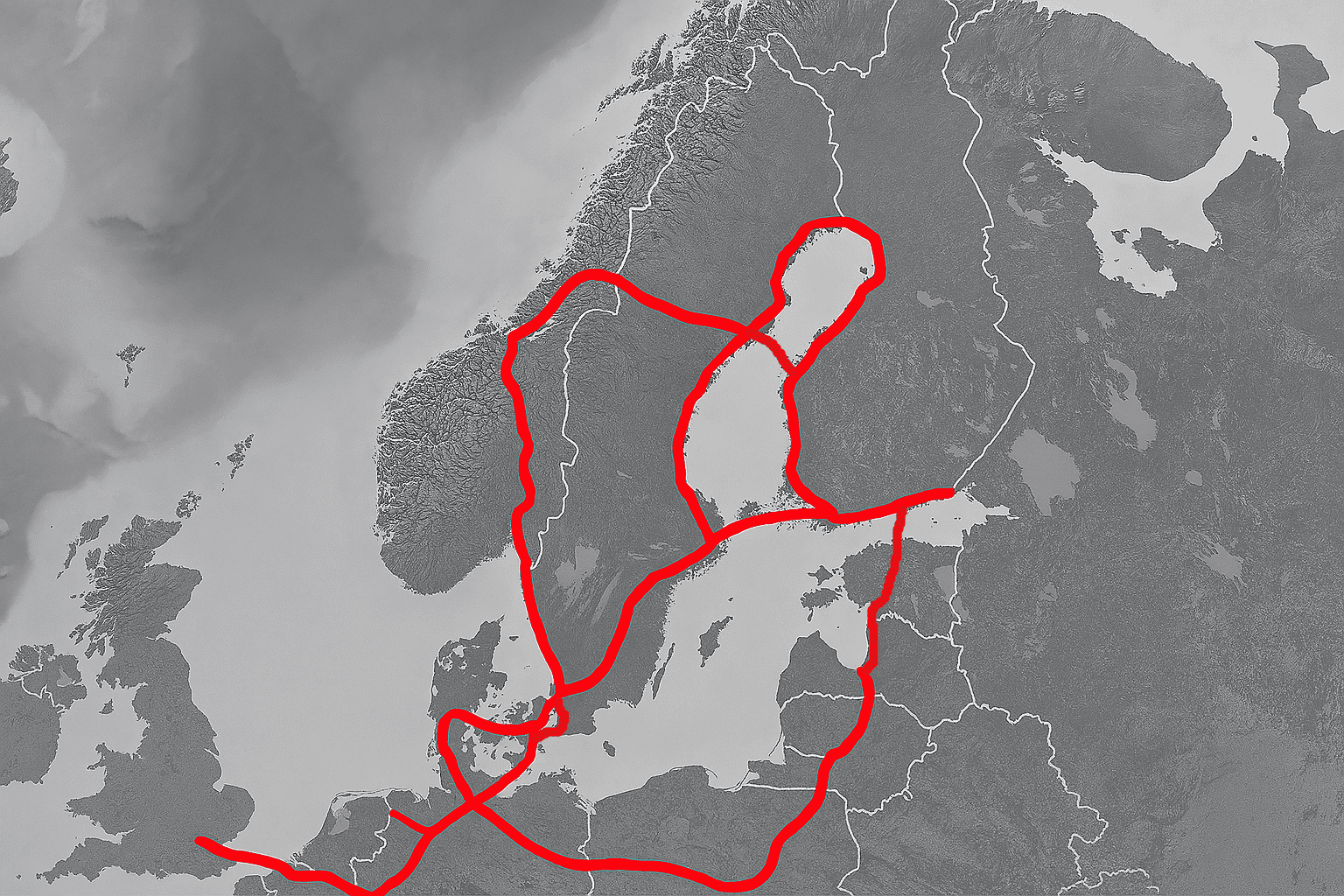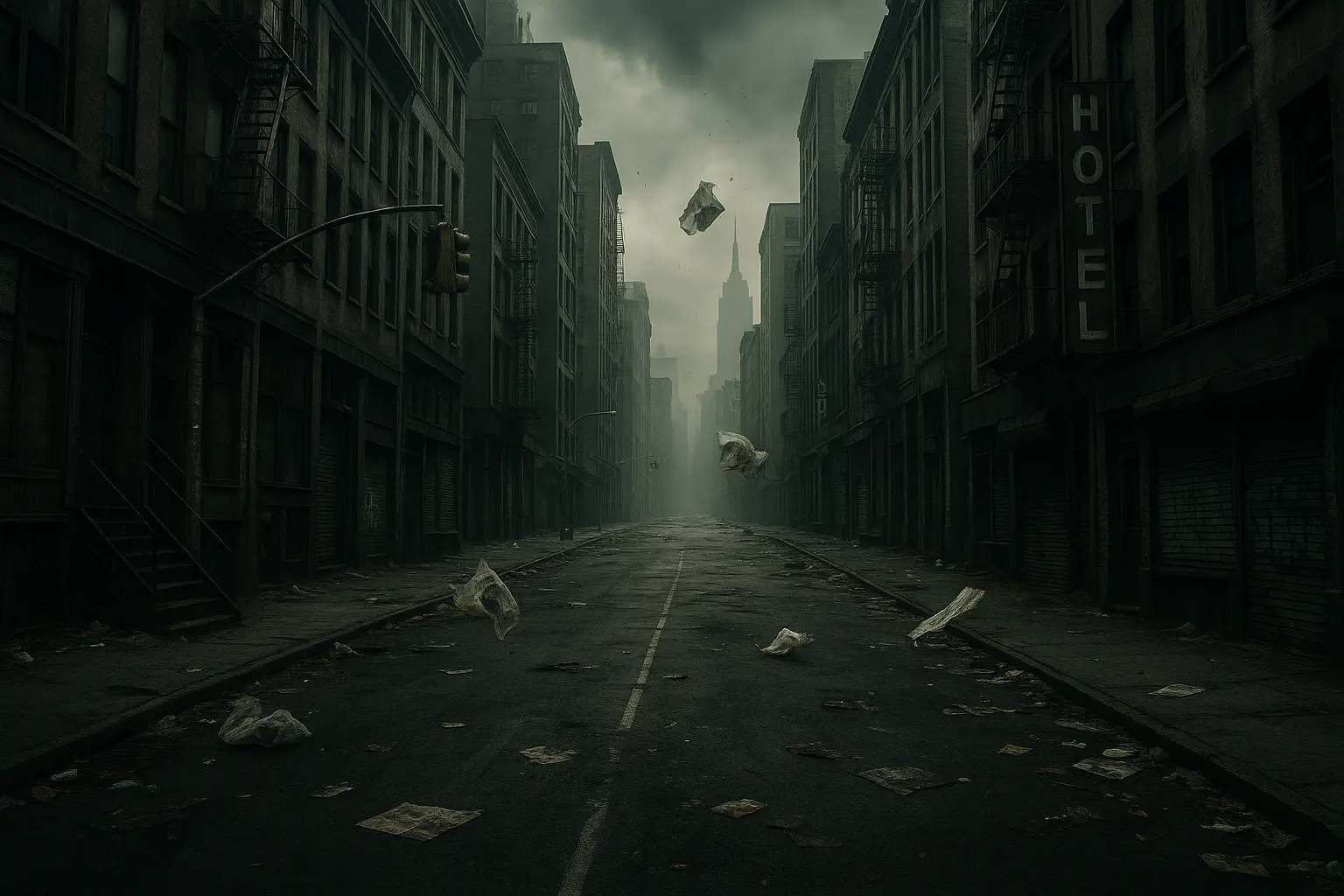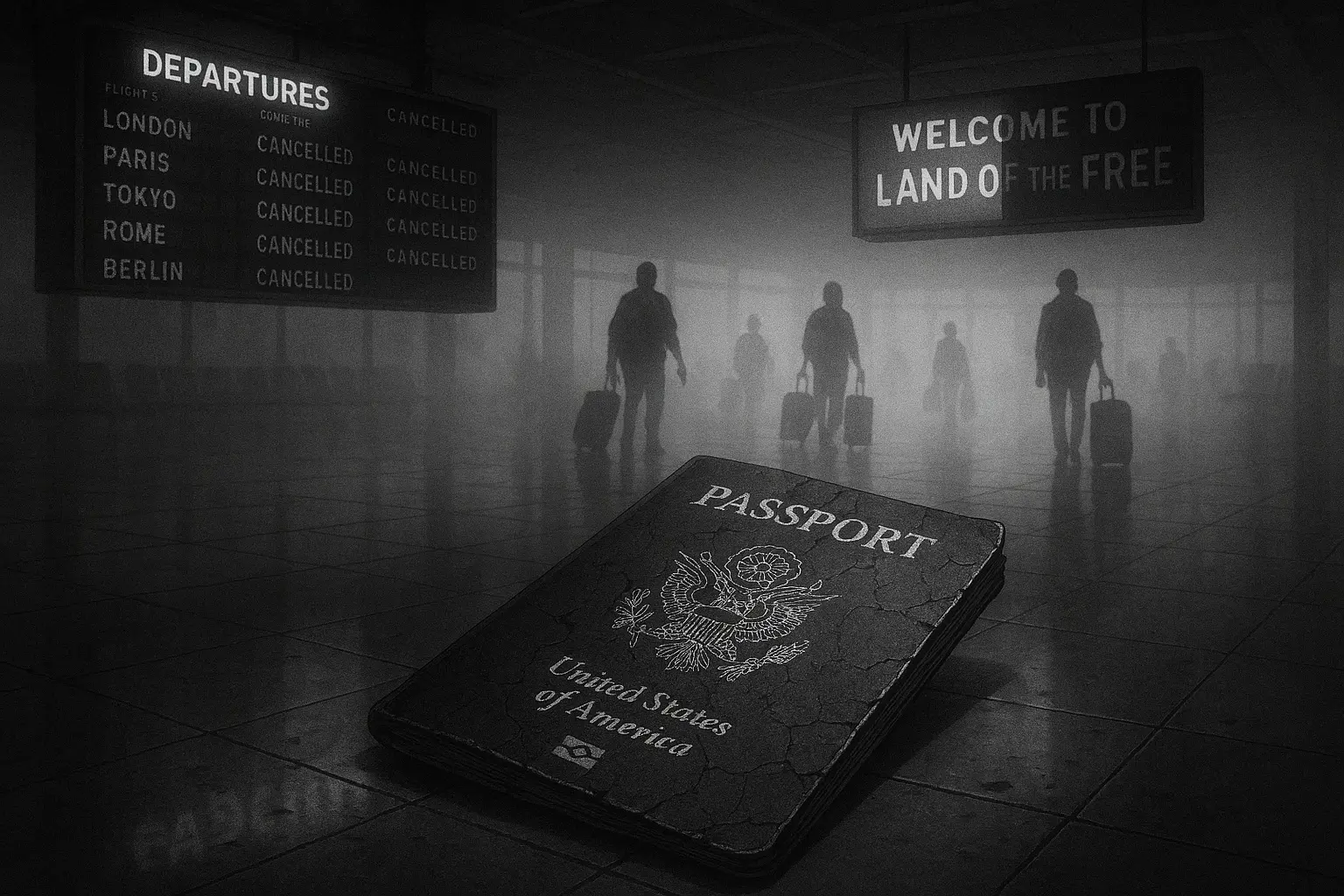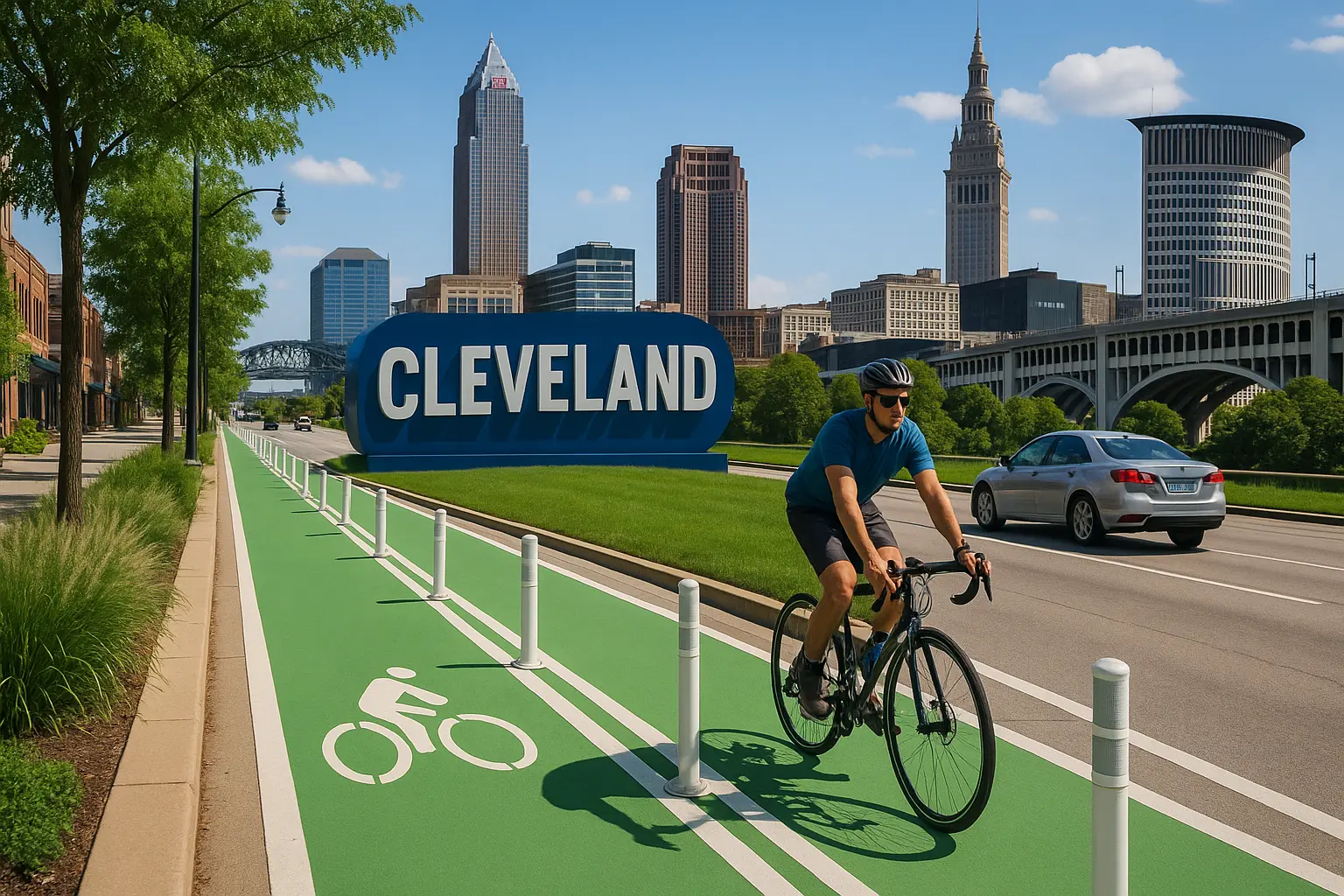The Baltic Beltway: A Strategic Infrastructure Vision for Europe’s Northern Frontier
Disclaimer: This article is not for the easily triggered. It challenges prevailing assumptions about European governance, infrastructure, and ambition. Read with an open mind — or a hard hat.
Overview
In March 2025, the European Commission set a wildly ambitious objective: to increase defense spending by up to €800 billion. The announcement landed with rhetorical thunder: bold visions, serious faces, and lots of vague references to “security autonomy.” One EU defense official even declared that Europe would be developing “the most advanced arsenal the world has ever seen.” It was a line that would’ve made Trump proud — and not in a good way.
But while Europe dreams of hypersonic missiles, AI-guided drones, and stealth-capable submarines, there’s one problem it hasn’t solved:
You still can’t drive a tank from Toulouse to Helsinki without hitting a bureaucratic wall or a crumbling bridge.
That’s where the Baltic Beltway comes in — not just as a concept, but as a strategic necessity.
This article argues that Europe’s biggest defense vulnerability isn’t lack of firepower — it’s lack of mobility.
Weapons are only as useful as their ability to arrive. Military resilience isn’t built from missile counts — it’s built on roads, railways, fiber cables, fuel lines, and decision-making speed. Without a continent-spanning logistics and infrastructure backbone, Europe’s vaunted defense spending risks becoming little more than an expensive illusion.
Enter the Baltic Beltway — not an official policy (yet), but a strategic concept for a multimodal infrastructure corridor stretching from the Arctic Circle to Central Europe. It connects rail, road, tunnel, bridge, fiber, and energy projects into a single logic: defend Europe by making it faster, harder, and more self-reliant.
But here’s the uncomfortable truth:
Europe still acts like a finished project.
It has forgotten how to build fast, how to build big, and how to build for war.
Europe: A Finished Project
Somewhere along the way, Europe began to believe it was done. Not done in decline — but done in the sense of being complete. The bridges had been built, the cities cleaned up, the motorways connected. All that was left, it seemed, was refinement: more trees, more bike lanes, more sustainability. “Build less, improve more” became the quiet doctrine.
Meanwhile, the rest of the world kept building like its future depended on it — because it does.
In China, India, the Gulf states, and increasingly Africa and South America, megaprojects still matter. Entire new cities rise in five years. Tunnels appear where mountains once stood. Railways stretch through deserts and across borders.
Even flawed or excessive projects (looking at you, ghost cities and six-lane highways in nowhere) carry a message: We believe tomorrow will be bigger.
Europe, by contrast, acts like a civilization that’s locked in a museum exhibit labeled:
“Functioning society, circa 1995. Do not disturb.”
It’s not that bike lanes and sustainability aren’t good. They are. But when green tape replaces ambition — when every new project is delayed by decades of reviews, complaints, and cross-border vetoes — you lose more than efficiency.
You lose sovereignty.
In a world increasingly defined by supply chains, connectivity, and speed of response, mobility is power. And Europe, despite all its riches, has fallen behind.
(Also see: how bureaucratic language becomes policy paralysis)
Türkiye: The Paradox of Progress
Let’s talk about Türkiye — yes, Türkiye.
Often criticized (rightly) for its democratic backsliding and strongman politics, Türkiye has nonetheless become a case study in infrastructure execution at scale.
- The new Istanbul Airport became one of the world’s largest in record time.
- Major tunnels, railways, and bridges were approved, funded, and built while European equivalents were still in consultation phase.
- In under a decade, Türkiye went from regional bottleneck to a transcontinental transport hub.
It’s not an ideal model. No one is suggesting Europe emulate authoritarian governance. But Türkiye shows something essential:
Speed, scale, and national ambition are not exclusive to autocracies.
They’re just harder in democracies — and harder still in multinational ones like the EU.
But harder doesn’t mean impossible. It means that Europe must stop treating red tape as sacred and start treating infrastructure as urgent. Defending democracy requires building like it.
Core Infrastructure Projects: Baltic Beltway Spine
The following projects form the backbone of what could become the Baltic Beltway — a strategic corridor tying together the Nordic, Baltic, and Central European regions with modern, dual-use infrastructure capable of supporting both civilian and military mobility.
Rail Baltica
- Status: Under construction, EU co-funded
- Scope: High-speed rail line connecting Tallinn → Riga → Vilnius → Warsaw
- Purpose: Passenger and military logistics (dual-use)
- Completion: Targeted late 2020s
This is the most advanced and funded pillar of the Beltway idea. It aims to connect the Baltic capitals to the European rail network, breaking post-Soviet infrastructure legacies and enabling rapid troop and freight mobility. NATO now sees Rail Baltica as a military corridor, not just a transit project.
Helsinki–Tallinn Tunnel
- Status: Proposed, feasibility studies complete
- Length: ~100 km (undersea)
- Cost: Estimated €15–20 billion
- Challenge: Cost, political will, and shifting security context
This visionary tunnel would merge two capitals into a “twin city” zone, dramatically boosting regional commerce. But it’s more than an economic play — it would serve as an underground NATO logistics channel, immune to blockades or sea-based sabotage.
Kvarken Bridge (Umeå–Vaasa Link)
- Status: Feasibility studies funded by Finland (early 2025)
- Scope: 30-mile connection via island chains
- Cost: €3–5 billion (2020 estimate, now likely higher)
- Strategic Purpose: Nordic–Baltic connectivity, rapid east-west movement
Originally considered speculative, the Kvarken Bridge gained real momentum following Russia’s full-scale war and Sweden & Finland’s NATO accession. The idea was simple: create a land bridge for military and supply logistics stretching from Norwegian pre-positioned U.S. gear → Sweden → Finland.
But now, that rationale is in question.
The leaked Hegseth Doctrine (March 2025) made it clear:
The U.S. will no longer commit ground forces to Europe in the case of Russian aggression. Only the nuclear umbrella remains.
That undercuts Kvarken’s original transatlantic logic — no U.S. troops means no gear to move. But the bridge has gained new meaning.
If Europe is on its own, then it needs internal mobility. The Kvarken Bridge becomes an EU logistics artery, not a U.S. one. It links Scandinavian redundancy with Baltic defense and economic autonomy.
🗞️ As reported in:
Sweden–Åland–Finland Archipelago Link
- Status: “Paper dream” — not officially proposed
- Length: ~170+ km if fully built
- Complexity: Extremely high (environmental, political, technical)
Though still conceptual, this project would connect Sweden and Finland through a series of bridges and tunnels via the Åland Islands. Think of it as the Nordic version of the Channel Tunnel meets Öresund Bridge.
If completed, it would:
- Provide a land-based NATO corridor from Stockholm to Turku
- Circumvent the vulnerable Baltic Sea shipping lanes
- Strengthen energy and data cable infrastructure eastward
For Finland, it could be the most consequential infrastructure move since joining NATO.
📺 Credit: Euronews Next (YouTube)
📺 Credit: The B1M (YouTube)
Second Öresund Link (Helsingborg–Helsingør)
- Status: Proposed
- Scope: Rail and/or road bridge or tunnel
- Goal: Complement the existing Malmö–Copenhagen link
- Strategic Use: Enhances Scandinavian redundancy and troop mobility
This secondary Öresund link would reduce pressure on the current bridge and provide dual-access between Denmark and southern Sweden, reinforcing the Baltic-North Sea transit axis for both commerce and NATO logistics.
Suwałki Gap Hardening (Poland–Lithuania)
- Status: Ongoing upgrades and NATO focus
- Scope: Highways, rail, supply depots, fuel storage
- Criticality: NATO’s most fragile land corridor (65 km)
The Suwałki Gap is the Achilles’ heel of NATO’s eastern flank — a sliver of land separating Kaliningrad from Belarus. It’s just 65 kilometers — and the only land connection between NATO’s Baltic states and the rest of the alliance. If war breaks out, the Suwałki Gap is where the map fractures.
NATO commanders have called it the most dangerous stretch of land in Europe. Yet a drive through the region today still feels more like a backcountry tour than a fortified artery. There are signs of investment: troop exercises, upgraded border posts, and the quiet arrival of logistics hubs. But it’s not enough — not even close.
Poland has begun reinforcing infrastructure in the area, but progress is scattered. Roads remain soft. Rail integration is years away. And while NATO battlegroups train nearby, the real defense of Suwałki rests on a network that doesn’t yet exist.
If Russia moved to cut it off, the Baltic states would be isolated — forced to rely on vulnerable sea routes or slow airlifts. The Suwałki Gap would no longer be a corridor. It would be a trap.
So what would a serious response look like?
A hardened corridor — with reinforced roads capable of moving armor, modular military rail systems, buried fuel lines, and staging areas that double as civilian infrastructure in peacetime. Fiber-optic lines that don’t dangle from poles. Air defense radars watching every approach. Not flashy — but decisive.
The region needs to be ready to move troops, power, and information — not in months, but in hours. And it needs to do it under pressure, not process.
Right now, that future is mostly theoretical. And in the most exposed stretch of the alliance, theory won’t hold the line.
“What is the Suwałki Gap — and Why NATO Is Worried” – DW News
Fehmarn Belt Tunnel (Germany–Denmark)
- Status: Under construction, due ~2029
- Scope: 18 km road and rail immersed tunnel
- Impact: Fast connection from Scandinavia into mainland Europe
Once completed, this will be the world’s longest immersed tunnel, drastically reducing travel time between Denmark and Germany. It strengthens the north-south Beltway axis, allowing for faster troop and supply flow from the continent to the Nordics.
📺 Credit: The B1M (YouTube)
Via Baltica (E67 Highway)
- Status: Operational, modernization ongoing
- Route: Prague → Warsaw → Kaunas → Riga → Tallinn
- Use: Civilian freight route, dual-use designation for military logistics
Long underestimated, Via Baltica is now on NATO’s radar. Combined with Rail Baltica, it provides redundant transport corridors in case rail lines are sabotaged or targeted.
Baltic Sea Infrastructure: Underwater Cables, Pipelines & Surveillance
- Context: After the Nord Stream sabotage, Europe realized its undersea vulnerability
- Initiatives: Balticconnector gas line, digital fiber redundancy, NATO undersea drone surveillance, offshore wind corridors
Protecting the Baltic’s seabed is no longer about energy — it’s about deterrence, intelligence, and sovereignty.
📺 Credit: CNN / Nic Robertson (YouTube)
The Infrastructure Race: Why China Builds While Europe Debates
While Europe drafts white papers and hosts forums on “strategic autonomy,” China is laying rail in Africa, building ports in Sri Lanka, and constructing fiber-optic corridors across Central Asia. It’s not theory. It’s concrete.
This isn’t about democracy vs autocracy — it’s about state capacity, vision, and political will.
China’s Belt and Road Initiative (BRI) may be flawed and controversial, but it’s reshaping the map. Its intent is clear:
“He who builds the road controls the trade.”
A few staggering comparisons:
| Metric | China | EU |
|---|---|---|
| High-speed rail (as of 2025) | ~45,000 km | < 12,000 km (mostly in France/Spain) |
| New cities (>1M pop, last decade) | ~20 major zones | ~2 |
| Ports constructed abroad | > 90 via BRI | ~10 (mostly commercial partnerships) |
| Average megaproject timeline | 4–6 years | 10–20 years |
And it’s not just speed — it’s alignment. In China, transportation, energy, data, and military logistics are all integrated. In Europe? You need a committee vote for fiber routing across a highway.
Why This Matters: The Strategic Cost of Delay
In case of war — or even hybrid disruptions — Europe won’t be fighting in the skies or cyberspace first.
It’ll be fighting its own bureaucracy.
That means:
- Trucks stopped at borders for customs checks
- Troop movements delayed by roadweight limits
- Fuel tankers stalled by planning permissions
- Data blackouts due to undersea sabotage without backup
Europe’s greatest vulnerability might not be lack of weapons — but lack of freedom of movement within its own borders.
Taiwan, Semiconductors, and the Illusion of Strategic Victory
Much of U.S. defense planning has become singularly obsessed with one scenario: a Chinese invasion of Taiwan.
And it’s not without reason — Taiwan is the undisputed global leader in semiconductor manufacturing, especially through TSMC, which produces more than 90% of the world’s most advanced chips. If China seizes Taiwan, it could theoretically control the world’s tech arteries.
But here’s the thing…
Even a “successful” U.S. defense of Taiwan may not shift the global balance.
Why?
- The economic cost of such a war would be devastating.
- It could involve the loss of a U.S. carrier group — a blow not seen since WWII.
- It would likely shut down trade routes across the Indo-Pacific, sending shockwaves through global supply chains.
Meanwhile, the chip monopoly is already being broken — intentionally.
(Related: How SignalGate shattered confidence in U.S. strategic coherence)
Semiconductor Diversification in Motion:
- Intel is expanding fabs in Arizona and Ireland.
- Samsung is investing heavily in Texas and South Korea.
- TSMC itself is building mega-fabs in Japan, the U.S., and Germany.
📺 Credit: Financial Times (YouTube)
By 2030, much of the world’s chip supply will be decentralized. Taiwan will remain crucial — but not irreplaceable.
So if the U.S. were to go to war — and win — it might not be protecting its technological edge, but merely salvaging a symbolic victory.
And that brings us back to Europe.
While the U.S. gambles with aircraft carriers, China is investing in infrastructure, ports, and railways that reshape trade flows and alliances for decades.
Europe must decide:
Will it defend its sovereignty through weapons or mobility?
Through deterrence, or by building the next global backbone?
Europe’s Green Tape vs China’s Green Steel: A Bureaucratic Crisis
Europe prides itself on leading the global green transition — and in many ways, it does. No other region has integrated climate policy into its legislation and urban planning quite like the EU.
But that leadership comes at a price: paralysis by process.
Europe suffers not from a lack of ideas — but from the inability to build them.
Environmental impact studies, local consultation mandates, multi-tiered appeals processes, and overlapping regulatory frameworks make launching any major infrastructure project an ordeal measured in decades, not years.
Real-world examples:
- Germany’s Tesla Gigafactory faced over 400 lawsuits before construction even began.
- Stockholm’s Förbifart motorway (a bypass) has been delayed for over a decade.
- The New Berlin Airport (BER) took 14 years to open — and was already outdated at launch.
📺 Credit: The B1M (YouTube)
In the meantime, China builds 26 airports in five years — some of them greener and more energy-efficient than Europe’s showcase projects.
This isn’t about abandoning environmental standards. But it is about recognizing a hard truth:
Sustainability without scalability becomes stagnation.
Europe has built a system where any single objection — from an NGO, a neighborhood council, or a solitary landowner — can halt a project supported by 99.9% of stakeholders.
In doing so, it has created an infrastructure culture that fears ambition.
That must change. Urgently.
Expropriation Without Overreach: Finding Balance in a Democratic Europe
Let’s confront a sacred cow: expropriation laws.
In much of Europe, forcibly acquiring private land for public infrastructure is viewed as a last resort, only used when all appeals are exhausted — and sometimes not even then. It’s seen as heavy-handed, undemocratic, and politically dangerous.
But in the 21st century, critical infrastructure delays aren’t just costly — they’re dangerous.
A single landowner refusing to sell a sliver of property can stall or block:
- A strategic rail line
- A fiber-optic corridor
- A defensive perimeter
- A NATO fuel depot
The current system effectively gives any citizen veto power over national security priorities.
No one’s suggesting autocratic land seizures. But the pendulum has swung too far.
We need:
- Fast-track mechanisms for national defense and strategic logistics
- Compensation models that are generous, not endless
- Legal timelines that are fixed, not flexible
- A mindset that says: “Yes, your voice matters — but so does the future of the entire region.”
Expropriation isn’t a dirty word. In a functioning democracy, it’s a tool — one that can be wielded fairly, transparently, and efficiently. Right now, Europe treats it like plutonium.
If we want to defend this continent, we need to be willing to build it. And that means building even when it’s uncomfortable.
The EU Defense Budget: €800 Billion – But Will It Move a Single Tank?
In March 2025, the European Commission unveiled a bold proposal:
Boost Europe’s defense spending by up to €800 billion over the next decade.
The headlines? Glorious.
“The largest European defense budget in history.”
“A quantum leap for EU security.”
“We will buy the best weapons the world has ever seen.”
Sound familiar?
It’s very “Trumpian” — grandiose claims of unmatched strength, delivered with theatrical confidence and minimal logistical planning.
But beneath the fanfare lies a serious problem:
Europe doesn’t need more weapons.
Europe needs the ability to move the weapons it already has.
Here’s the reality:
- Many NATO members already possess more tanks, fighter jets, and artillery than Russia — at least on paper.
- But military mobility across Europe is a logistical nightmare.
- A Leopard 2 tank may be state-of-the-art — but if it can’t cross a weak bridge in Latvia or get stuck in Polish mud for lack of reinforced roads, it’s just a static museum piece.
This isn’t a hardware deficit. It’s a connectivity crisis.
Unless a significant portion of the €800 billion is funneled into:
- Rail modernization
- Bridge reinforcements
- Supply depots and fuel corridors
- Secure fiber and energy grids
- Cross-border coordination hubs
…then Europe may end up with the world’s most expensive, least mobile arsenal.
📺 Credit: TVP World (YouTube)
The Baltic Beltway as Blueprint: From Dream to Directive
It started as a map full of dotted lines.
A bridge here. A tunnel there. Some military planners scribbling logistics corridors onto napkins in Brussels or Vilnius. And yet — the idea of a Baltic Beltway is becoming more tangible by the month.
What was once speculative now feels urgent.
Why? Because Europe is at a strategic crossroads.
Consider what’s now in motion:
- Fehmarn Belt Tunnel → Under construction
- Rail Baltica → Actively built across four countries
- Kvarken Bridge & Åland Corridor → Politically revived
- Suwałki Gap → NATO-backed infrastructure hardening
- Fiber, energy, port upgrades → Quietly underway
And most importantly, the mindset is shifting. Security isn’t just tanks and treaties anymore — it’s bridges, bandwidth, bunkers, and batteries.
The Beltway — while not yet a formal EU initiative — could evolve into:
- A new Trans-European Infrastructure Strategy (TEIS)
- A NATO–EU hybrid mobility corridor
- A framework that ties together civilian resilience and military readiness
Think of it like a European I-95, but strategic — capable of moving troops, supplies, and trade with equal ease.
It’s not just a road. It’s the spine of sovereignty.
But if we want to realize this, we need something Europe hasn’t shown in a long time:
- Political courage
- Institutional risk-taking
- Public persuasion in favor of ambition
Conclusion: A Challenge to the Builders of Europe
Europe doesn’t lack talent.
It doesn’t lack money.
It doesn’t lack ideas.
What it lacks is urgency.
The Baltic Beltway is not just a wishlist of tunnels and bridges. It’s a test:
Can Europe still build when it matters?
Because infrastructure — real, ambitious, dual-use infrastructure — is no longer just about growth. It’s about survival. It’s about deterrence. It’s about sovereignty.
And it’s about proving that liberal democracies can still act — not just react.
The United States is pivoting away.
China is paving the world.
Russia is threatening it.
If Europe wants to chart its own course, it has to stop drafting strategy papers and start pouring concrete.
So here’s the challenge:
- Make the Baltic Beltway real.
- Create permitting paths that move at the pace of crisis, not consensus.
- Embed defense into every new tunnel, rail line, and digital backbone.
- Stop apologizing for ambition.
And most of all — believe again that this continent isn’t finished.
It’s still under construction.
Agree? Disagree? Think we’re dreaming too big — or not big enough?
Let me know in the comments. I read them all.
🔗 More Reading & Sources
- China’s 2024 coal power construction hits 10-year high – Reuters
- Renewables 2023 Executive Summary – IEA
- Why China matters to the world’s green transition – WEF
- Commentary: China’s strategic green transition – CREA
- One step forward for Europe’s defence – CER
- Dagens PS – Bro mellan Sverige och Finland får ny tyngd
- The Sun – Incredible plan to build Europe’s longest bridge
- Washington Post – Secret Pentagon memo on Hegseth doctrine (Paywall)







Post Comment